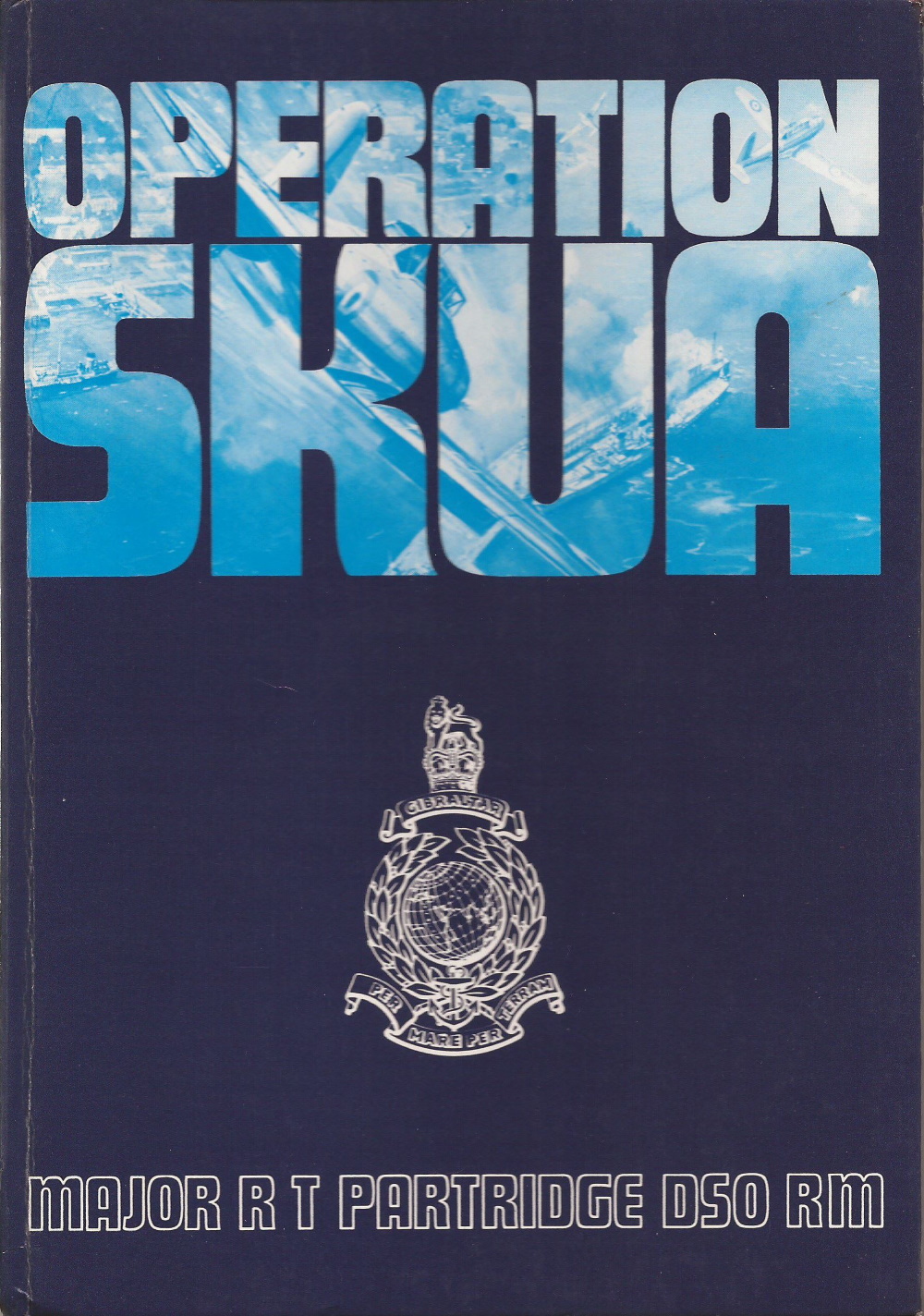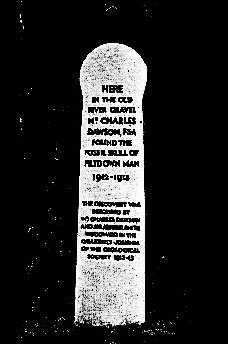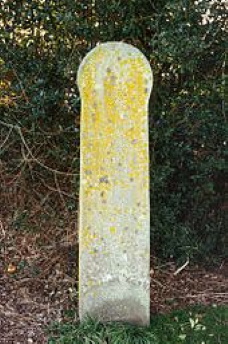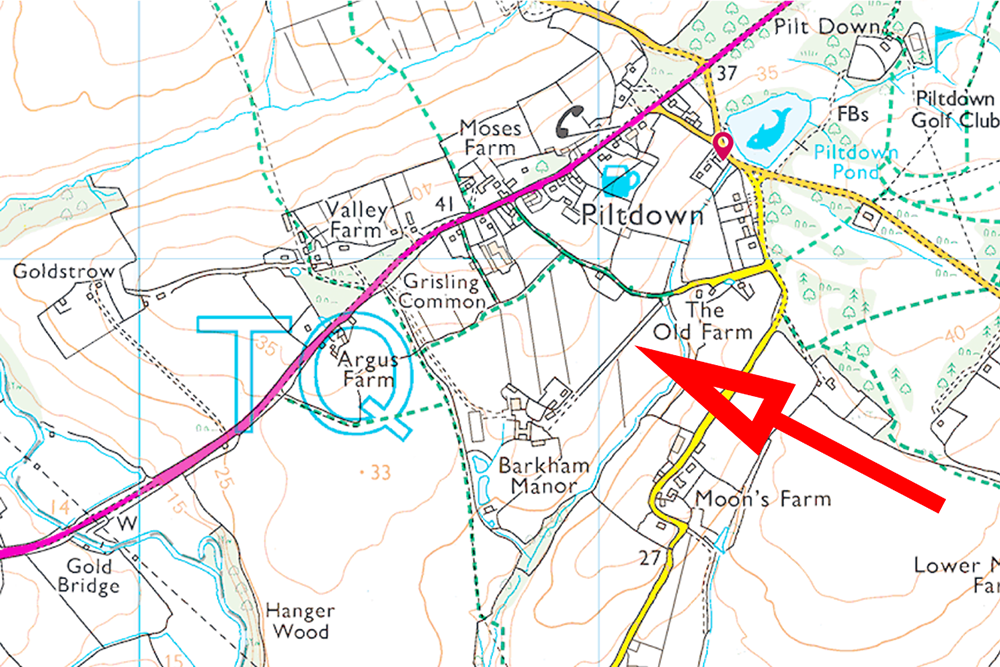The Partridge Connection
Prologue
After I got back from Abu Dhabi in the early autumn of 1964, I renewed contact with Sonia Kaulback, whom I'd met briefly at a party the year previously, and we started going out together.
My mother was so relieved that at last I had such a presentable girl-friend, that she lent us her car (I think it was a BMC Mini) from time to time so that we could travel down to Mayfield to spend the weekend with Elsa Douglas at her oast-house in Piccadilly Lane. Elsa (Za) lived very frugally, surrounded by heavy French furniture from yesteryear, and plumbing straight from the Middle Ages, but she was by no means abstemious, and she both smoked and drank convivially, much to the despair of her rather puritanical daughter!
To one side of the oast-house, there was a latched gate leading through to a side-lawn of Hunt's Barn, a much more substantial and extensive property, much further off the lane than was the oasthouse. In fact it had a capacious annexe, known as the games room or Jolly House (‘jolly' being the sailors' nickname for a marine), next to an outdoor swimming pool, near the lower curve of the drive.
The owners of this six-acre paradise on earth were the Partridge family, Major Richard Partridge DSO RM (aka Dick), by then retired, his wife Félicité (aka Fay), and their teenage son Simon and teenage daughter Penelope (Penny), sixth-formers at Eastbourne College and Benenden respectively.
There was a briefly held notion that Fay's brother John Chrestien had coincided with Sonia's father Ron at Cambridge, but be that as it might, it was certainly the case that Fay and Ron were previously acquainted from way back pre-war. And of course it was just so nice to have such friendly and hospitable next-door neighbours on our visits to Elsa – they were also very supportive of Elsa in between whiles, of course.
But before going any further, it would be very helpful if Dick and Fay's fascinating antecedents were tabulated, with the help of the ancestry.co.uk website.

Félicité (Fay) Partridge (née Chrestien)
[Yabsley 2009 tree]
Fernand Francois Chrestien,
ancestry.co.uk/family-tree/person/tree/10104172/person/25121157869/facts
[Douglas tree]
Fernand Howard Chrestien
ancestry.co.uk/family-tree/person/tree/11759279/person/26205525389/facts
| # | Individual | Spouse / Partner | Family |
| ‑4 | Paul Emile Chrestien (7 Jun 1813, W Bengal – 12 Aug 1873, W Bengal) |
Rosette Manuella Bhogobotie (16 Oct 1816, W Bengal – 16 Jul 1892, W Bengal) (m "1851") |
Fernand Francois Chrestien (5 Mar 1838, W Bengal – 3 Oct 1923, Worthing) et al |
 | |||
| ‑3 | Fernand Francois Chrestien (5 Mar 1838, W Bengal – 3 Oct 1923, Worthing) prosperous mica merchant Probate £118,000 |
Elizabeth Day (ca 1854, Iℓminster – 4 Feb 1933, Worthing) (m 3 Jan 1876, Dinapore) |
Marie Kate Chrestien (25 May 1880, Calcutta – 21 Apr 1957, Worthing) Fernand Edward Chrestien (20 Jun 1882, Calcutta – 8 Sep 1942, India) Dora Marguerite Chrestien (2 Jun 1885, Marseille – Jun 1961, Worthing) |
 | |||
| ‑2 | Fernand Edward Chrestien (20 Jun 1882, Calcutta – 8 Sep 1942, India) barrister Bramber Lodge, West Worthing Dep UK to Bombay, 26 Sep 1914, P&O SNG Co India Arr UK from Bombay, 23 May 1915, P&O SNG Co Persia |
Violet Howard Nicholls (27 Apr 1888, Eastbourne – 7 Dec 1965, Uckfield) (m 11 Nov 1908, Heene) daughter of Howard Hill John Nicholls, surgeon |
Félicité (Fay) Violet Chrestien (6 Mar 1910 – Mar 2001) Fernand Howard (John) Chrestien (Jun 1911 – Dec 1974) Diana de Beaufort Chrestien (7 Mar 1916 – crem 14 Jun 1979) |
| ‑2 | Dora Marguerite Chrestien (2 Jun 1885, Marseille – Jun 1961, Worthing) |
Alan Lachlan Gordon-Walker (20 Jan 1883, India – 16 Sep 1934, Canary Islands) (m Oct 1905) |
Patrick Chrestien Gordon-Walker (7 Apr 1907 – 2 Dec 1980) Labour politician, conflicted on racial issues Robin Thomas Gordon-Walker (Jun 1910 – 18 Nov 1947) |
| Lt Col Leslie Martin Rent RE (b ca 1883) (m 9 Oct 1935) |
|||
 | |||
| ‑1 | Félicité (Fay) Violet Chrestien (6 Mar 1910 – Registration Date Mar 2001, Registration District Uckfield, Registration No 42E, District & Subdistrict 4611, Entry Number 170) involved with Bletchley Park operations |
Alec Chalmer Marples (13 Aug 1908 – ca Mar 1982) (m Q2 1935, Worthing 2b 1027) |
|
| Maj Richard Thomas Partridge DSO RM (10 Oct 1910 – 17 Apr 1990) (m Q3 1946, Uckfield 5h 358) Royal Marines and Fleet Air Arm fighter pilot in WW2 |
Simon Thomas Partridge (b 1947) Penelope Partridge (b 2 Jun 1948, Worthing 5h 688) | ||
| ‑1 | Fernand Howard (John) Chrestien
1, 2 (Jun 1911 – Dec 1974) ne'er-do-well? remittance man? or marching to a different drum? |
Charlotte Kaufman (1914 – 1999) (m 1 Oct 1936) |
Charles Chrestien (b ca 1938) Diana Harriet Chrestien (25 Mar 1942, Norfolk, Litchfield, Connecticut USA – 21 Mar 1974) |
| Willow P Graves (née Clegg) (b Q1 1944) (m Q2 1963, Battle 5h 60) (m Q1 1970, Hastings 5h 521) |
|||
| ‑1 | Diana de Beaufort Chrestien (7 Mar 1916 – crem 14 Jun 1979) involved with Bletchley Park operations |
Brig Gen Tadeusz (Tad) Lisicki (20 Jun 1910, InowrocIaw – 30 Jul 1991, Eastbourne) electronics genius closely involved in Polish research and Bletchley Park developments |
|
 | |||
| 0 | Simon Thomas Partridge (b 1947) |
Renée Cohen | |
| 0 | Penelope (Penny) Partridge (b 2 Jun 1948, Worthing 5h 688) |
Levon (Leon) Aristede Dedeyan (b ca 1951) (m 29 Dec 1978, Uckfield) |
|
Richard (Dick) Thomas Partridge
[Yabsley 2009 tree]
Robert Partridge
ancestry.co.uk/family-tree/person/tree/10104172/person/282227046346/facts
| # | Individual | Spouse / Partner | Family |
| ‑3 | Robert Partridge (b 1822) 1901 census shows Harold as head of household, with Florence and Roberta as dependents |
Jane Parsons (b 1830) (m 16 May 1850, Northants) |
Florence Partridge (b 1866) Roberta Partridge (b 1869) Harold Alexander Partridge (b 20 Jan 1874) |
 | |||
| ‑2 | Harold Alexander Partridge (20 Jan 1874, Kensington – 19 Apr 1942, Worthing) stockbroker, retired in 1923 |
Harriett Florence Montague Stemson (b ca 1872) (m Q2 1904, St Thomas 5b 98) 190 |
Marjorie Alexandra Partridge (b ca 1906) Paul Harold Partridge (b 21 Sep 1908) Richard Thomas Partridge (10 Oct 1910 – 17 Apr 1990) |
 | |||
| ‑1 | Richard Thomas Partridge (10 Oct 1910 – 17 Apr 1990) 1911 Census Portraits Probate |
Félicité (Fay) Violet Marples (née Chrestien) (m Q3 1946, Uckfield 5h 358) |
Simon Thomas Partridge (b 19 Apr 1947) Penelope (Penny) Partridge (b 1948) |
 | |||
| 0 | Simon Thomas Partridge (b 19 Apr 1947) |
Renée Cohen (m Q2 1990, Hendon 13 447) |
|
| 0 | Penelope (Penny) Partridge (b 2 Jun 1948, Worthing 5h 688) |
Levon (Leon) Aristede Dedeyan (b ca 1951) (m 29 Dec 1978, Uckfield) |
|
As a result of an extraordinary salvage operation from a Norwegian lake some decades after the end of the Second World War [WW2], Dick Partridge was persuaded to write his autobiography Operation Skua, a very nicely and modestly written account of his upbringing, service career and later years. This will all become clearer as the narrative progresses.
One point to note is that Dick was commissioned in the Royal Marines (RM), and not in the Fleet Air Arm, a section of the Royal Navy (RN). But until 1938, at least, all the aeroplanes and ground crew belonged to the Royal Air Force (RAF) as did the pilots and aircrew, with RAF commissions to match their RN or RM rankings. Another, minor, point is that, whether fighters, bombers or dive-bombers, what they flew were aeroplanes and not airplanes!

The Royal Marines' insignia motto of ‘per mare per terram'
(by sea and by land) could perhaps be extended to include their
formidable aerial capabilities, as Dick Partridge exemplified
Please click here for Chapter 1 or here for Chapter 15
re Chapter 1
Fay and Dick had attended the same kindergarten in Worthing, both at the age of about six, but what with Dick's prep school, public school, and enrolment in the Royal Marines at the age of 18, they went their separate ways for a while. Indeed, Fay married somebody else to start with, but that didn't work out. By the approach of war in 1939 they were reunited and planning to marry, but that had to wait some seven years until 1946, and they really did live happily ever after.re Chapter 15
Following very nearly five years as a prisoner of war in Germany, Dick evidently appreciated the peacetime opportunity to catch up with all the developments in military aviation meanwhile. But in due course he decided to try his hand at farming, buying a 100 acre dairy farm at Cross-in-Hand in East Sussex, with latterly a side-line in poultry which eventually predominated very profitably.But it was very hard work, and so in about 1960, he and Fay decided to sell the farm, buy a small country house, with about 6 acres, and see how the poultry market developed. They moved to Hunt's Barn, Piccadilly Lane, in Mayfield … adjacent to the oast-house occupied by Elsa Douglas, relict of Ron Kaulback's best friend at Cambridge!
Triumph and Disaster
Dick's wartime career exemplified Kipling's famous poem If, and its exhortation to treat those two imposters just the same – though the triumph was of his own making and the disaster was imposed upon him by much further up the chain of command – most probably the over-promoted Vice Admiral Sir Lionel Victor Wells (1884 – 1965).
re Chapter 6
Though dive-bombing of terrestrial targets was widely inflicted by German forces supporting Franco in the Spanish Civil War, the sinking of the Königsberg was, as Dick remarks, a historic event in naval history, demonstrating for the first time the effectiveness of the dive-bomber against major warships.
But was the Skua a fighting dive-bomber or a dive-bombing fighter? The Admiralty couldn't decide, and following the Trondheim disaster the Skua was phased-out from operations. The Japanese and Americans went much further, of course – Japanese dive-bombers took part in the attack on Pearl Harbor on 7 Dec 1941, and American dive-bombers were crucial in the Battle of Midway 4-7 Jun 1942, when a US task-force of 3 carriers took on a Japanese fleet of 4 carriers.
Early on, the US fleet was losing the contest – high-altitude bombers were hopelessly inaccurate, Devastator torpedo bombers were hopelessly slow, shot down in droves by Zero fighters. But deployment of Dauntless dive-bombers set all four Japanese carriers (Kaga, Akagi, Soryu, Hiru) ablaze - all sank, together with heavy cruiser Mikuma.
Though the US lost carrier USS Yorktown and destroyer USS Hammann, this engagement was seen as an early turning point in the Pacific War (1941 – 45), despite the heavy toll of Allied naval vessels taken by Japanese dive-bombing thereafter.
Between the triumph and the disaster there had of course been the tragicomic Grotli episode (Chapters 8-10) and its aftermath (Chapter 16), the story of which gradually emerged in the 1970s and has assured Dick of a permanent niche in the pantheon of maritime warfare – and has underlined the chivalric nature of aerial combat, now woefully lost in our twenty first century of missiles and mass-destruction.
But for this you will have to consult the book, and (ideally) visit the Fleet Air Arm Museum in Yeovilton!
re Chapter 12
Churchill's notorious remark that, in wartime, truth is so precious that she should always be attended by a bodyguard of lies, can be interpreted in several ways, one of which was illustrated by the sinking of the carrier HMS Glorious, on 8 Jun 1940, together with destroyers HMS Ardent and HMS Acasta, by the German battleships Scharnhorst and Gneisenau.The circumstances in which this happened are still controversial, but the Royal Navy was now thirsting for revenge, and Dick Partridge was deputed – much against his better judgment – to lead a well-nigh suicidal mission to Trondheim, with a vague brief to sink some unspecified German naval tonnage – possibly the Scharnhorst (in fact it was) - in reply.
The odds against success were so overwhelming that Churchill himself demurred when the plan was discussed secretly in Cabinet. It turned out as disastrously as could have been expected.
Dick himself got through, delivered his payload of bombs, and was well on the return journey only to be shot down by a couple Me109 fighters, and ended up as a prisoner of war for very nearly 5 years – though it's often alleged that anyone who has survived the English public school system can take a prison sentence in his stride.
(Scharnhorst was later sunk on 26 Dec 1943 in the Battle of the North Cape, and Gneisenau had already been permanently disabled on 26 Feb 1942.)
Hunt's Barn, Mayfield
Elsa Douglas was already established in the (Hunt’s Barn) Oasthouse when the Partridges moved into Hunt’s Barn (there were, or at least had been, other oast-houses in the vicinity, but only Elsa’s was associated with Hunt’s Barn) and it wouldn’t have been long before the surname Kaulback cropped up in reference to an imminent weekend visitor, who had recently acquired a somewhat downmarket new boyfriend who would of course be up for inspection. In retrospect, it was quite an extraordinary coincidence, as Fay knew of Ron Kaulback from pre-war days.
As I rapidly came to appreciate, Dick personified all the traditional virtues of integrity, quiet patriotism, all-round capability and gentle humour that seem nowadays rather out of fashion, plus excellent sporting skills, latterly on the croquet lawn at the Old Farm in Piltdown (as too will become clearer). He also completed The Times cryptic crossword every day, and was a formidable opponent at Scrabble. The complete all-rounder in fact!
[Fay appreciation to follow]

Distant view of the Oasthouse from Hunt’s Barn
They sold Hunts Barn in the mid 1960’s (though I can’t remember exactly when), to a Lord Hardinge (George Edward Charles Hardinge, 3rd Baron Hardinge of Penhurst (31 Oct 1921 – 14 Jul 1997)), a literary peer, who was in the process of changing wives. Elsa was naturally pretty desolated, as Dick and Fay had been very supportive both socially and logistically.
Dick, however, was not sorry to move, as he had apparently become increasingly convinced that the house was haunted and refused to stay overnight alone in it. And in any case, he had no further ambitions of poultry farming!
The Old Farm, Piltdown
Sonia insists that the Old Farm’s postal location was Fletching rather than Piltdown, and of course she’s got the Royal Mail on her side. And from the Anglican point of view, Piltdown was a mere hamlet, a fragment of the village of Fletching, devoid of its own parish church, which didn’t bother Dick and Fay as they weren’t churchgoers. But as we shall see, Piltdown had asserted itself in days gone by...
After marriage, when we moved first to Norwich for three years and then to Bristol for five, and Reading (for what seemed like eternity, but that’s what Reading does to you), where children happened, we were very happy to be invited down to the Old Farm for magically long weekends, And of course there was still Elsa at the Oasthouse, and Sonia's father Ron (and new wife Joyce) near Ross on Wye.
There were four time-honoured stages of settling in for the weekend, all of which would have baffled onlookers from elsewhere on the planet.
- Whisky Macs on arrival (generally Friday evening)
- Fiercely competitive game of croquet on Saturday afternoon
- Times Saturday (Competition) Crossword throughout Saturday
- Fiercely competitive game of Scrabble on Saturday evening
When the time came to depart on Sunday, one felt like Adam and Eve being expelled from Paradise.
Into The White
This was probably the most unexpected period of Dick’s retirement, in which for example his sunken Shua was salvaged, he was reunited with the rock-solid Sevald Grotli, the Norwegian innkeeper - who died the very next day - and with his German opposite number Horst Schopis in that fateful duel with the Heinkel He 111 (which was also salvaged), and became involved with Mike Rosenberg and the film Into The White that was made about this extraordinary wartime episode.
Tadeusz Lisicki
In about 1978, when Bletchley Park’s role in defeating the Third Reich became publicly known, it emerged that both Fay and her sister Diana had themselves been involved in some capacity in those operations, and that Diana had been – and still was – romantically involved with Tadeusz Lisicki. Even at that late date, but having signed the Official Secrets Act, they said nothing more than that they’d played a part in what had been achieved.
Both Fay and Diana were very well-educated, and of the right social calibre, so this came as no surprise. But what did astonish me was when Diana on one occasion quite calmly answered one of the contentious Times clues as “All Lombard Street to a China orange”, a phrase I’d never heard before and rarely have since!
Tad went a little bit further, simply by remarking to me that there were things that could never be revealed about the ongoing consequences of Allied WW2 deciphering techniques – not so much in the event of WW3 (increasingly likely as of 2022) as for the implications to the Soviet bloc that their post-WW2 co-opting of German ciphering techniques had been, at least for a good while, an open book to GCHQ.
I’m trying to find more about him on the internet, but he's very elusive...
During the battle of El Alamein the Allies used an advanced military device created by a Polish engineer. An electric mine detector was recreated in Britain by Józef Kosacki and Andrzej Gabroś, after the original design by Tadeusz Lisicki was lost in 1939.
On a visit to Bletchley Park some years ago I did notice a portrait photograph of him, prominently displayed, so such an image does exist, and I’ve now contacted the Polish Embassy for their possible assistance.
The Man who Never Was
On one of our long week-ends with Dick and Fay, she took us to see the Piltdown memorial in Barkham Manor, just a couple of hundred yards along Barkham Lane from the Old Farm, as indicated by the arrow, and on the right-hand side of the lane towards the Manor.

The memorial as it looked originally

And as it looks today
It had originally been erected in good faith, on 23 Jul 1938, but by the 1950’s the "finding" in 1912/13 had been thoroughly discredited as a forgery by Dawson.
The inscription on the memorial stone reads (or at least, did read originally in 1938 at the unveiling by Sir Arthur Keith):
"Here in the old river gravel Mr Charles Dawson, FSA found the fossil skull of Piltdown Man, 1912–1913. The discovery was described by Mr Charles Dawson and Sir Arthur Smith Woodward, Quarterly Journal of the Geological Society, 1913-1915."
Moving on
Dick died of leukaemia in 1990 and Fay lingered on quietly until 2001; in many ways they were the last of the generation that could have been immediately identifiable as British in their outlook and interests – open minded (Fay in particular), conservative (Dick in particular) and kindly (them both), wise and practical, though not intellectual in the Continental sense, and keen on games, indoor or outdoor (Dick in particular), but above all a relaxed propriety.
And of course, there were the household dogs – Rusty the brown Labrador, rather elderly even at Hunt’s Barn, Sheba the yellow Labrador, a good few years his junior, and Castor and Pollux, the noisy Welsh terriers – all of them so fortunate always to have so much room to roam. And the cats – particularly Kipper – who sat on the table at mealtimes and clawed the food from your fork if it was too long in transit from your plate!
Uckfield
Time is such a thief - it steals our memories and erodes our sense of continuity – when did such and such happen? What was it before or after? Neither Sonia nor I can clearly remember when it was that Fay moved to Uckfield. She then retired to a nice nursing home for her last few years, where a companionable cat would spend each day curled up at the further end of her eiderdown.














